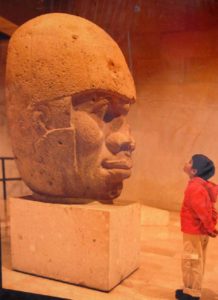How does external consideration support an ideal state?
The road to spiritual evolution is connected with growth of self-knowledge. Gradually one learns to recognize parts of oneself which are against, indifferent, and supportive of inner growth. As one ascends, one accumulates moments of presence. These change one’s inner chemistry, or being. Before one finds a school, inevitably the vast majority of one’s inner world is self-serving and characterized by the feeling of ‘I.’
Why do we imagine ourselves to be unified?
One powerful tool that the Fourth Way provides is the idea that one contains many different, often contradictory, parts. Each uses the word ‘I’ to refer to itself. There are several reasons that this illusion of wholeness persists. First, a human being has one physical body. Second, we are unaware of the constant turning of thoughts, emotions, and sensations in our inner world. A third reason is that when these momentary impulses do arise, we typically identify with them.

A 15th-century Dutch painting depicts a maiden that symbolizes how the constantly turning wheel of the mind can blind one’s vision.
External consideration as a tool to maintain presence
There are aspects of presence that can play in our favor. One is when presence battles imagination, the many I’s of our inner world. A major tool for this struggle is external consideration.
External consideration is the work of being present to another human being. With this effort, one is able to leave one’s selfish view of the world, and see what the person in front of one needs. This is kindness based on self-knowledge and applied to another. Curiously, at certain points, one may invoke compassion towards one’s own self, and in this way, externally consider oneself.
Inner considering
The mechanical counterpart of external consideration is inner considering. This phenomenon arises from the machine, or the lower self. When one inner considers, one acts from how one thinks others perceive oneself. Often, in this state of inner considering, one mechanically tries to fulfill the expectations of others.
Kindness, harmony, and right efforts, as well as a certain inner strength, characterize external consideration. Inner considering, on the other hand, usually results in identification, negative emotions, and bolsters one’s imaginary picture of oneself and the world.
Essence vs. inner considering

This child viewing a colossal Olmec head is a reminder that essence can grow when inner considering diminishes.
Essence, the part in us that can grow, is stunted by inner considering, which attributes much significance to one’s imaginary view of oneself. Curiously, however, the less interesting one thinks one is, the more interesting, or present, one becomes.
Separating oneself from oneself
Too much sanity may be madness. And maddest of all, to see life as it is and not as it should be! – Cervantes
The view that something is not right in life as we know it is inherent to many magnetic centers, that part of one that accumulates influences that may eventually draw one to find a school. Once in a school, one learns to distinguish right from wrong in oneself, and eventually separate them.
To ascend, one must gaze deeply into one’s lower parts. Plato’s ideal state, taken internally, must grow, like the lotus in the Eastern traditions, out of the mud.
The depth of darkness to which you can descend and still live is an exact measure of the height to which you can aspire to reach. – Pliny the Elder
For another article by Benjamin B, see: https://fourthwaytoday.org/struggle-of-the-magicians/.
